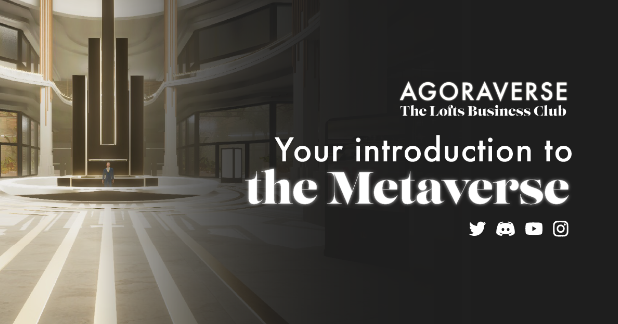The Metaverse represents a new frontier for social interaction, offering a range of possibilities for new forms of collaboration, communication, and community building. From virtual concerts and events to shared creative projects and games, the Metaverse offers a unique space for people to come together and interact in ways that are not possible in the physical world.
Shared Creative Spaces
One potential area where the Metaverse could have a significant impact is in the creation of shared creative spaces. In these spaces, users could collaborate on creative projects such as music, art, and design, sharing ideas and techniques with other users from around the world. These shared creative spaces could help to break down geographic barriers and allow people from different cultures and backgrounds to collaborate and learn from each other.
Virtual Events and Gatherings
Another potential area where the Metaverse could have a significant impact is in the creation of virtual events and gatherings. In the Metaverse, users could attend virtual concerts, festivals, and other events, interacting with other users in real-time and experiencing the event as if they were physically present. These virtual events could help to break down barriers to participation and allow people from around the world to come together and share experiences.
New Forms of Commerce and Trade
The Metaverse could also create new opportunities for commerce and trade, allowing users to buy, sell, and trade virtual goods and services within the virtual world. For example, users could create and sell virtual products such as clothing, furniture, and art, or offer virtual services such as design or consulting. This could create new opportunities for entrepreneurs and small businesses, as well as providing new avenues for creative expression and innovation.
Improved Accessibility and Inclusivity
One of the key benefits of the Metaverse is its potential to improve accessibility and inclusivity. In the virtual world, physical disabilities and other barriers to participation can be overcome, allowing people to interact and collaborate in ways that are not possible in the physical world. Additionally, the Metaverse could be designed to be more inclusive and diverse, allowing people from different cultures, backgrounds, and identities to come together and interact in a safe and welcoming space.
Challenges to Consider
While the potential for the Metaverse to create new forms of social interaction is significant, there are also a number of challenges that must be considered. For example, developers must work to ensure that the Metaverse is a safe and welcoming space for all users, and that measures are in place to prevent harassment, cyberbullying, and other negative behaviors. Additionally, the Metaverse must be designed to promote positive social interactions and experiences, rather than reinforcing negative stereotypes and biases.
Challenges to Overcome
One of the major challenges facing the Metaverse is the need to overcome existing barriers to social interaction. The Metaverse must be designed to be accessible to people from all walks of life, including those with physical disabilities, language barriers, and other challenges. Developers must also be mindful of the potential for cyberbullying, harassment, and other negative behaviors in the virtual world, and take steps to prevent and address these issues.
Another challenge is the need to create a sense of community and belonging within the Metaverse. In order to foster positive social interactions and experiences, the virtual world must be designed to encourage users to build relationships, collaborate, and share experiences with one another. This may require new approaches to user engagement and community building, as well as innovative tools and features that allow users to connect and interact in meaningful ways.
Opportunities for Innovation
Despite these challenges, the Metaverse presents a range of opportunities for innovation in the realm of social interaction. One of the key benefits of the virtual world is its ability to facilitate communication and collaboration across geographic and cultural boundaries. By providing a shared space for people from all over the world to come together, the Metaverse has the potential to break down barriers and foster a greater sense of global community.
Additionally, the Metaverse can provide new avenues for creative expression and experimentation. In the virtual world, users can create and share content that may not be possible or practical in the physical world, such as immersive art installations or interactive music experiences. This can help to drive new forms of artistic expression and creativity, as well as providing new opportunities for cultural exchange and understanding.
Finally, the Metaverse can provide new opportunities for social impact and activism. By bringing together people from all walks of life, the virtual world can facilitate greater collaboration and collective action around issues such as climate change, social justice, and human rights. This can help to create a more engaged and informed citizenry, and drive positive change in the world.
Designing for Accessibility
One of the key challenges facing the Metaverse is the need to ensure that the virtual world is accessible to all users, regardless of their physical or cognitive abilities. This includes designing for users with disabilities such as blindness or low vision, deafness or hearing loss, mobility impairments, and cognitive disabilities.
To address these challenges, developers must incorporate principles of universal design into the development process. This includes designing interfaces and interactions that are flexible, intuitive, and adaptable to a range of user needs and preferences. This may include features such as audio descriptions, closed captions, and haptic feedback, as well as customizable interfaces that allow users to adjust settings to meet their needs.
Preventing Cyberbullying and Harassment
Another major challenge facing the Metaverse is the potential for negative behaviors such as cyberbullying and harassment. To address these issues, developers must take a proactive approach to preventing and addressing negative behaviors in the virtual world.
This may include implementing robust reporting and moderation systems, as well as providing tools and resources to help users protect themselves from harassment and abuse. Developers must also work to create a culture of inclusivity and respect within the virtual world, by promoting positive behaviors and providing training and education on issues such as cyberbullying and harassment prevention.
Building Community and Fostering Engagement
In order to create a vibrant and engaging virtual world, developers must work to build a strong sense of community and foster engagement among users. This may include creating virtual spaces that are designed for social interaction and collaboration, as well as providing tools and features that facilitate communication and connection between users.
Developers must also work to create a culture of sharing and collaboration within the virtual world, by promoting the creation and sharing of user-generated content and fostering a sense of ownership and investment in the virtual world among users.
Conclusion
Overall, the Metaverse has the potential to create new forms of social interaction that are not possible in the physical world. By breaking down barriers to communication and collaboration, providing new avenues for creative expression and experimentation, and fostering greater social impact and activism, the Metaverse can help to drive positive change in the world. However, in order to realize this potential, developers must work to address the challenges of creating a safe and inclusive virtual world, and provide innovative tools and features that allow users to connect and interact in meaningful ways.










